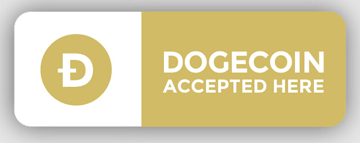The Bitcoin halving event, a significant occurrence in the world of cryptocurrency, has garnered widespread attention and curiosity among investors, enthusiasts, and the financial community. As a pivotal aspect of Bitcoin's monetary policy, the halving holds the potential to impact the cryptocurrency's price, network security, and overall market dynamics. To comprehend the implications of this event, it is essential to delve into the intricacies of the Bitcoin halving and its broader significance.
The Basics of Bitcoin Halving
Bitcoin operates on a deflationary monetary system, characterized by a fixed supply of 21 million coins. The process of mining, which involves validating and adding transactions to the blockchain, is incentivized by the issuance of new bitcoins as rewards. Approximately every four years, or after every 210,000 blocks are mined, the reward given to miners is halved. This event is known as the "halving."
The first Bitcoin halving occurred in November 2012, reducing the block reward from 50 BTC to 25 BTC. The second halving took place in July 2016, further reducing the reward to 12.5 BTC. The most recent halving transpired in May 2020, cutting the reward to 6.25 BTC per block. The next halving is anticipated to occur around the year 2024.
Impact on Supply and Demand
The halving event has a direct impact on the supply of new bitcoins entering the market. With the reduction in block rewards, the rate at which new bitcoins are created diminishes, ultimately leading to a slowdown in the growth of the cryptocurrency's supply. This decrease in the inflation rate has the potential to influence the supply-demand dynamics of Bitcoin, potentially leading to a reduction in the selling pressure from miners.
Conversely, the halving may also affect demand dynamics, as the event often draws attention to the scarcity of the cryptocurrency. As the supply growth rate slows down, the narrative of Bitcoin as a deflationary asset becomes more pronounced, potentially triggering increased interest from investors seeking a hedge against inflation and traditional market uncertainties.
Market Price and Volatility
Historically, Bitcoin halving events have been associated with significant price movements and heightened market volatility. The anticipation and aftermath of a halving often lead to speculative activity and price rallies. Following the two previous halvings, Bitcoin experienced substantial price increases, propelling it to new all-time highs.
The rationale behind these price surges lies in the interplay between reduced supply issuance and potential increases in demand, as well as the psychological impact of the event. However, it is important to note that past performance is not indicative of future results, and the market's response to the halving can be influenced by a multitude of factors beyond the event itself.
Network Security and Miner Economics
The halving also has implications for the security and integrity of the Bitcoin network. As the block rewards diminish, miners' revenue from validating transactions is directly affected. The reduction in rewards can lead to increased competition among miners, potentially driving less efficient operations out of the market. Consequently, this can contribute to a consolidation of mining power among larger, more sophisticated mining operations.
Furthermore, the halving has the potential to impact miner economics, influencing decisions regarding equipment upgrades, operational costs, and the overall sustainability of mining activities. The event prompts miners to recalibrate their strategies and operational efficiency to adapt to the altered.
So far every time there has been a halving the price of bitcoin has gone up. This is not financial advice. I do believe this is something to keep an eye on.
Join Robinhood with my link and we'll both get a free stock 🤝 https://join.robinhood.com/leronnd-5f64e3
Check out the book I wrote Shadow Games on Amazon.
Join Tiblio for options trading tips and paper trading practice.








No comments:
Post a Comment